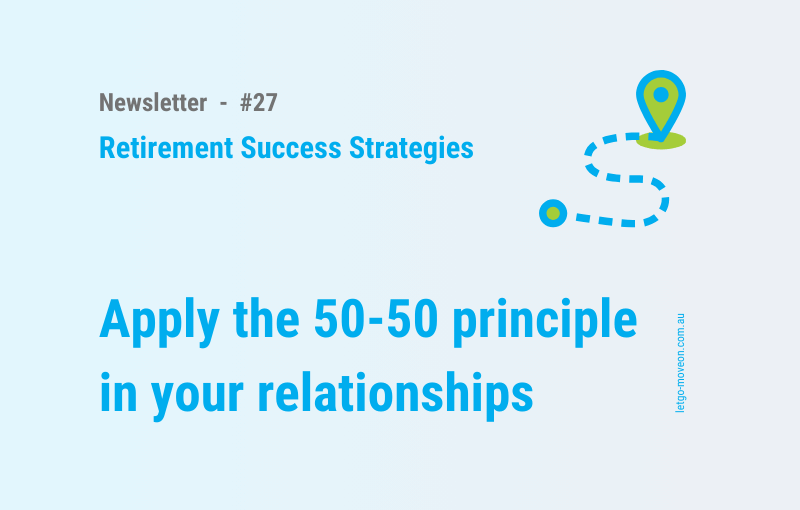One of the most powerful – and most helpful – concepts I learned during my coaching qualification is this:
Life is 50-50.
(For a comprehensive introduction to the concept: The Life Coach School, Brooke Castillo, Podcast #331: Good AND bad)
It means life will always be a mix of positive and negative experiences. People, too, including ourselves, are never entirely good or entirely bad. We’re all a beautiful, complicated mix of both.
This perspective can feel radical at first, especially if you’ve spent years trying to “fix” yourself or others, striving for perfection, or believing happiness means the absence of challenges.
Embracing life’s duality can bring incredible freedom.
Here’s why this matters so much in retirement:
This stage of life brings more time with ourselves and with those we love. And while this extra time can deepen bonds, it can also surface old tensions or create new ones. Differences in habits, opinions, or desires can feel more obvious.
When we apply the 50-50 concept to our relationships, something shifts:
-
- We see loved ones as whole humans—good and bad—just like us.
- We stop judging and start understanding.
- We let go of the exhausting search for “perfect”.
- We open up to deeper, more compassionate connections.
A self-reflection exercise
Using my ADA framework (Awareness – Decisions – Actions), let’s explore how you might use this mindset shift with someone important to you.
Step 1 – Awareness
Think about a relationship where you feel some tension. Notice your current thoughts about this person. Are you expecting them to be “better” or “different”? Can you see where they, like all of us, are a mix of strengths and flaws?
Example: “My friend always cancels plans last minute. It frustrates me. But she is also the one who shows up in a big way when I really need support.”
Step 2 – Decisions
Decide how you want to think and feel about this person, knowing they are 50-50. What perspective would serve you better?
Example: “I choose to value her loyalty and generosity, even if her reliability isn’t perfect. I want to feel grateful instead of resentful.”
Step 3 – Actions
What could you do from this new place of acceptance? How might you approach the relationship differently?
Example: “I’ll check in with her before making plans, and I’ll create a backup option so I’m not disappointed if things change.”
This isn’t about tolerating bad behaviour or ignoring your own needs. It’s about meeting others (and yourself) with compassion and realism – so you can enjoy richer, more authentic connections.
Give it a try.
Which relationship in your life could benefit from this 50-50 perspective?
-
- What are your current expectations, thoughts, and judgments in this relationship?
- Based on the 50-50 concept, what do you want to think and feel about the other person and your relationship with them?
- What could you do to express your acceptance of the 50-50? And to change the relationship for the better?

